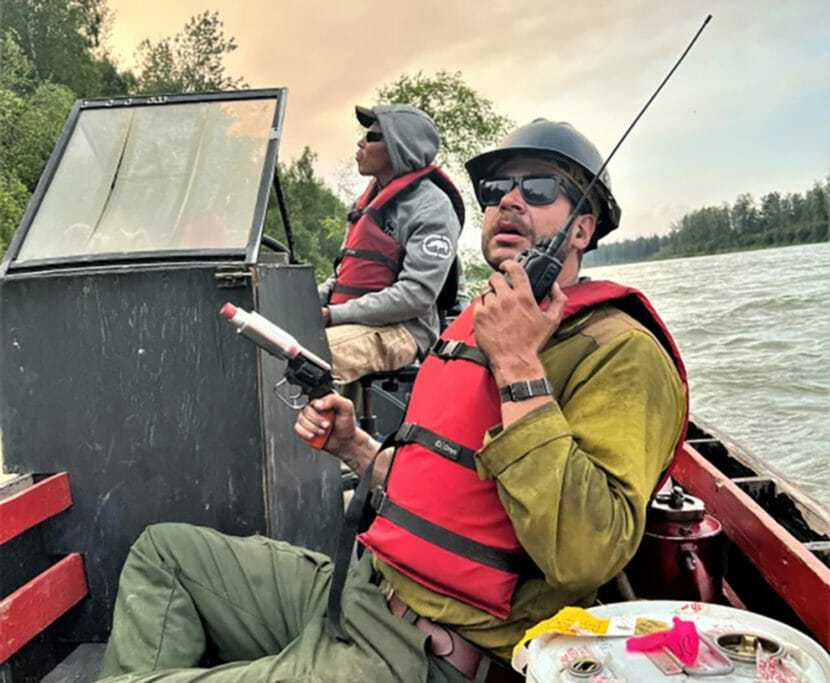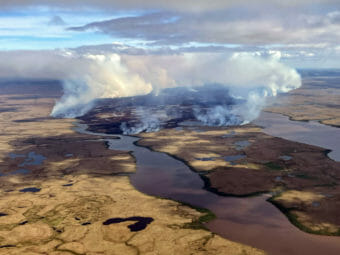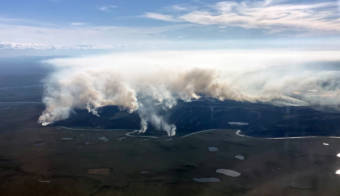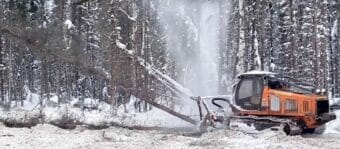
A Southwest Alaska wildfire has burned through the site of a support camp for the Pebble Mine project as the state’s wildfire season remains on pace to be one of the worst on record.
Almost 2.4 million acres have burned through Wednesday morning, according to the Alaska Interagency Coordination Center.
Firefighters have kept flames away from most structures across the state, according to reports submitted through Wednesday, successfully defending villages and towns even as smoke blankets many of the state’s largest cities.
Over the Fourth of July weekend, part of the Upper Talarik fire burned through the site of a supply camp constructed to support the controversial Pebble Mine, a planned metal mine in the headwaters of Bristol Bay.
Mine construction is on hold, pending the result of several legal fights and permitting processes, but geologists have been exploring the site’s potential.
No one was present at the site when the fire burned through the area.
Joe Holzinger, a public information officer assigned to the Upper Talarik and a handful of other fires collectively known as the Lime Complex, said it isn’t clear how much of the camp was damaged or destroyed.
He said assessors are en route to the area, which is within a temporary flight restriction intended to aid firefighting aircraft.
“At this point, we’re just waiting for that assessment to see how much it was impacted,” he said of the mine site.
A spokesman for Pebble Limited Partnership did not return a phone call Wednesday.
Abe Davis, operations chief for the Lime Complex fires, said firefighters have successfully burned out some areas around Lime Village, the town for which the fires are named. Those controlled burns are intended to protect the village against wildfires.
The wildfire season has been exceptionally bad in Southwest Alaska this year, with more than 1.2 million acres burned, a record for the region.
A low-snow winter was followed by a hot and dry spring and a spree of thunderstorms, contributing to the historic fire season.
Elsewhere in the state, fires have prompted evacuation watches near the town of Anderson, on the Parks Highway, and in locations near Fairbanks.
Clear Space Force Station, which houses one of the United States’ main ballistic missile alert radars, is among the areas in the alert zone. The town of Nenana is just north of the zone.



